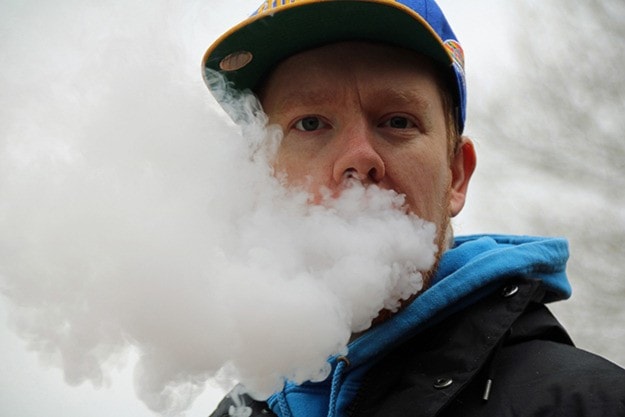“I think the worst thing about (vaping) is not knowing what it’s going to do to you 20 or 40 years from now. It hasn’t been around as long as smoking.”
Known as 'vapes', vaporizers or e-cigarettes have quickly become socially acceptable among Revelstoke's youth.
According to Wikipedia, a vape is: "a handheld electronic device that vaporizes a flavoured liquid ... The liquid in the e-cigarette, called e-liquid is usually made of nicotine, prolylene glycol, glycerine and favourings. Some e-liquids do not contain nicotine."
What's most concerning, even among youth who vape, is the lack of scientific data regarding the long term effects of vaping.
"I'm not stupid. I'm aware this is probably not really good for you," said Cassie, a grade 10 student at Revelstoke Secondary School. "I feel that in a few years when one generation has gone though all the effects it has it won't be good."
Still, Cassie says,vaping has become accepted among youth. Along with that acceptance, cigarette smoking has also started to regain status as acceptable among students.
"Nobody chirps the smoke pit people anymore," said Cassie. Still,vaping is seen among some students as being uncool. "If you tell someone you vape, they're like 'oh my god. You're stupid."
Note that the names of students in this article have been changed.
It's the social acceptance and lack of studies on the long-term effects that are most concerning for RSS principal Greg Kenyon and pharmacist David Lafreniere from People's Pharmacy.
While Lafreniere said he doesn't doubt that in the short-term using vaporizers is not as harmful as smoking cigarettes, he feels strongly that inhaling any vaporized chemicals on a long-term basis isn't good.
"There's not a lot of long term safety studies or data. The absence of data saying it's not healthy doesn't mean it's not," he said. "There's a pervasive view, especially among young people that it's somehow completely safe. It's socially acceptable. In the end, you are inhaling chemicals in your lungs and that can't be good."
The lack of health regulations when it comes to vaping also holds significant concerns for Lafreniere.
"At this point there are no standards for what can be in nicotine juice. We don't actually know what's in it," he said. "Anything else like nicotine patches or gum, you know what's in that. It's been heavily regulated."
For Kenyon, the lack of information about the long-term impact of using a vape makes it difficult to approach students who are using the devices.
"It's about education because we know that scaring students doesn't work. It's about educating them and giving them information and teaching them. In order to do that you need to have good research and good data, and it doesn't exist right now for e-cigarettes and vaporizers," said Kenyon."I've actually said this to students: 'If you're quitting smoking I'm glad you're vaping, but it's just a step in the process. If you didn't smoke and you're vaping you need to stop now.'"
Lafreniere agrees using a vape can be less harmful than smoking and may be a way for smokers to quit using cigarettes, if it's used as a short-term solution to quitting smoking. Where he has concerns however is there are youth who start vaping who would never consider touching a cigarette. He also pointed out the flavours of nicotine juice, which includes strawberry, blueberry, chocolate and vanilla, make it appear that e-cigarettes and vapes are being marketed towards a younger demographic.
"With flavours like those, in my mind they are inherently targeting children," Lafraniere said, noting he is also worried with the ease someone who has never smoked before is able to start vaping. "You can pick one up and inhale without that sick feeling you might expect from smoking. You don't smell like cigarettes, it's more accessible."
Ryan, a grade 11 student, says he hasn't touched a cigarette since starting to use a vape.
"It's a better alternative. In the long run it's cheaper, it's less harmful," he said. "I've smoked both. Everybody thinks vapes are so much worse and tries to scare kids, but for a kid to smoke a vape instead of a cigarette, if I had a kid I'd rather him smoke a vape instead of a cigarette."
Still, when asked how he feels about students who would never smoke a cigarette, but would vape, Ryan's response was: "Don't do either. It's just easier to not do either."
He also said students in all grades are vaping, even ones in grade eight.
"It's ridiculous. They certainly haven't been addicted to something before," he said. "They've never been around nicotine and they're obviously vaping nicotine and they're getting themselves addicted to something that there's no reason for."
Geoff, a grade 10 student, said students are starting to see the addictive consequences of using vapes.
"I think people are realizing nicotine is addictive because people that use their vapes, at break they're always like, 'I gotta go down (to the smoke pit),'" he said.
When it comes to approaching youth about using vapes, all of the students agreed having adults demand they stop isn't the answer.
"You don't want adults telling you, 'Oh, don't do that,' because [we're] not going to stop," said Cassie. "You have to approach it with an open mind. If you approach it really aggressively, the kid is not going to listen to you. Teenagers want their own decisions."
